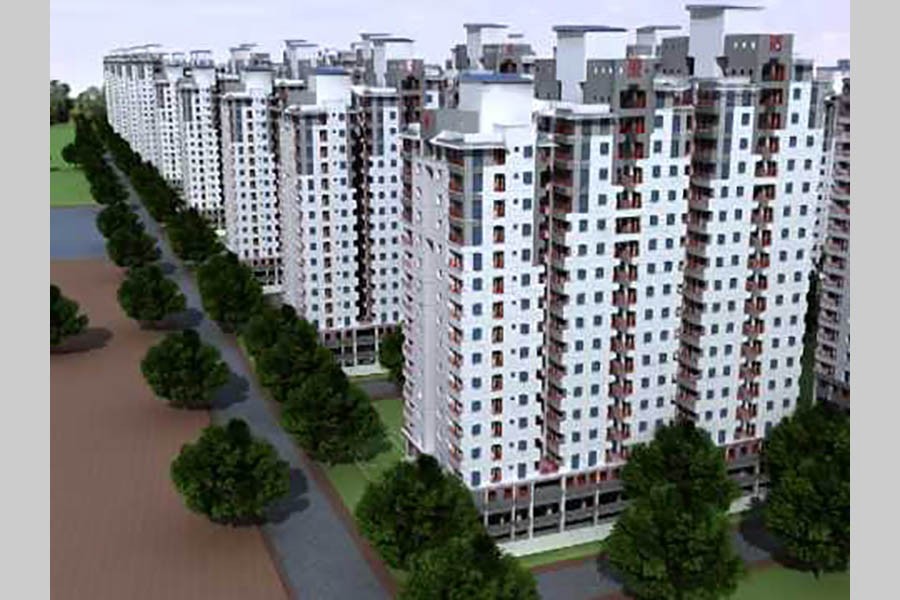
Published :
Updated :

The Rajdhani Unnayan Kartripakhha's (Rajuk's) plan to develop yet another satellite town at Basila under Keraniganj on the western side of the Buriganga looks promising on the face of it. Dubbed a mega and modern satellite town, if it follows the plan chalked out, there will be residential accommodation for a large number of people. As many as 23,000 families will enjoy residential facilities in the state-agency built 200 buildings -each 20 storied. Then there will also be 5,000 residential plots each measuring five and three-katha (a katha is equal to 720 sq ft) respectively. Whether the allottees of these plots will have their own choices to build their houses or have to maintain a minimum height is yet to be known. If their buildings also can be shaped as tall as those of the Rajuk, the accommodation facilities will be gargantuan. Of the total 1,084 acres of land to be acquired for the township, the Rajuk buildings will take 17 per cent and the plots 31 per cent of the area.
Sure enough, the capital city is teeming with people and their dispersal has no substitute. But as has happened in the past in Uttara, the distribution of acquired land has only favoured a particular class of privileged people. Compensation for the owners of lands acquired for such purposes turns out to be a mockery. The allottees get the plots outrageously cheap and if the plots are luckily located in a commercial area, the developers offer-beside sharing the buildings to be built on a 50-50 basis -a cash amount 50-100 times the paid-up money for the plot. This is insane. Some people are thus unduly favoured when the original owners are driven out of the land with a meagre amount of compensation. Construction of flats on acquired land is not as draconian an injustice as that of allocation of plots.
Here the use of space is crucial. That 24 per cent area of the proposed town will be required for roads shows movements within it will be easier but how the access roads will cope with the pressure of the office-going and returning people may be a most intriguing question. The indication is that people living here will be required to attend offices and businesses in the city centres. Even there is no mention if schools, colleges, universities and hospitals will be set up within the township area. The outward and inward streams of people will be heavier in the absence of such facilities there.
Provision for citizen facilities, business and commerce, entertainment will take a small proportion of the area beside the lake that will cover 6.0 per cent of the land. Clearly, accommodation of the burgeoning city population has figured prominently but not their dispersal away from the city centres. This is flawed reasoning. Instead of building townships that stand to be integrated with the capital, better it would be to build such satellite towns at a considerable distance in order to take the pressure off the capital. Dispersal of civil service functions alone can help the cause. Such decentralisation can address the urban conundrum as well as help rational distribution of wealth through creation of opportunities for more people in a congenial environment.


 For all latest news, follow The Financial Express Google News channel.
For all latest news, follow The Financial Express Google News channel.